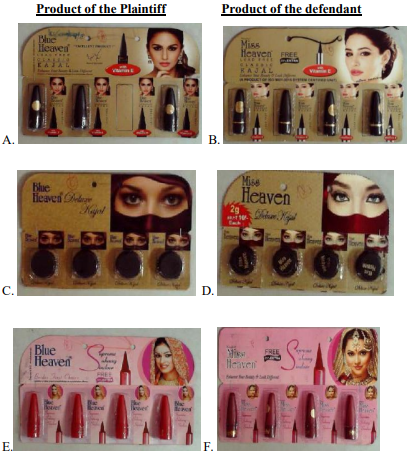L’Oreal SA v. eBay International AG (C-324/09)
L’Oreal SA v. eBay International AG (C-324/09)
[2011] R.P.C. 27
Key Words: Parallel Import, Exhaustion, Europe, Trade Mark, Infringement, eBay, put on the market, reputation, online sale
Legal Provisions:
EU Trade Mark Directive:
Article 5 – According to Article 5(1) of the Directive, the registered trade mark confers on the proprietor exclusive rights therein. In addition, Article 5(1)(a) provides that those exclusive rights entitle the proprietor to prevent all third parties not having his consent from use in the course of trade of, inter alia , any sign identical with the trade mark in relation to goods or services which are identical to those for which the trade mark is registered. Article 5(3) sets out a non-exhaustive list of the kinds of practice which the proprietor is entitled to prohibit under paragraph 1, including, in particular, importing or exporting goods under the trade mark concerned.
Article 7 – 1. The trademark shall not entitle the proprietor to prohibit its use in relation to goods which have been put on the market in the community under that trademark by the proprietor or with his consent.
2. Paragraph 1 shall not apply where there exist legitimate reasons for the proprietor to oppose further commercialization of the goods, especially where the condition of the goods in changed or impaired after they have been put on the market.
The national court in this case asked the European Court of Justice (ECJ) for a preliminary ruling on issues concerning the circumstances in which the offering for sale of trade-marked goods on internet auction sites contravened intellectual property rights.
The claimant, L’Oreal (L) in the main proceedings owned a number of United Kingdom and Community trade marks for cosmetics, perfumes and hair-care products. L operated a closed selective distribution network which restrained authorised distributors from supplying products to other distributors. The respondent, eBay (E) operated an electronic marketplace on which sellers offered goods for sale in return for a percentage fee on completed transactions.
L brought proceedings based on infringing transactions on E’s European websites. In addition to counterfeit goods, the proceedings concerned goods that bore L’s trade mark but were intended for sale in the United States and not the European Economic Area (EEA). Some of the items were sold without packaging. L submitted that E was liable for the use of its trade marks where those marks were displayed on E’s website and where sponsored links triggered by the use of keywords corresponding to the trade marks were displayed on the websites of search engine operators, such as Google.
Key Issues before ECJ:
- Whether an online marketplace operator such as E was liable for infringing sales such as those in issue;
- Whether an online marketplace operator could be prevented from advertising trade-marked goods by means of a keyword identical to the trade mark.
Held (Preliminary Ruling):
On Issue 1
In a situation where goods located in a third state had not previously been put on the market within the EEA or, in the case of a Community trade mark, in the EU by the trade mark proprietor or with his consent, the exception set out in Directive 89/104 Article 7 concerning the exhaustion of rights could not apply. Such finding was also applicable where goods were offered for sale or advertised on an online marketplace and targeted at consumers located in the territory covered by the trade mark.
ECJ held that it was essential that the proprietor of a trade mark registered in a Member State could control the first placing of goods bearing that mark on the market in the EEA. Therefore, the right to prevent such offers for sale or advertising was conferred on the trade mark proprietor by Article 5 of Directive 89/104 and by Regulation 40/94 Article 9.
It was also observed that the sale of goods without packaging was liable to harm the image of the product concerned and impaired the trade mark’s essential functions of indicating origin. ECJ noted that Directive 76/768, Article 6(1) imposed conditions on the marketing of cosmetic products based on the provision of certain information on the packaging.[1]
On Issue 2
Where the supplier of a service used a sign corresponding to the trade mark of another person in order to promote goods which one of its customers was marketing with the assistance of that service, such a use, as observed by ECJ, fell within the scope of Article 5(1) of Directive 89/104 and Article 9(1) of Regulation 40/94 where the use was such as to establish a link between the sign and the service.
ECJ pointed that in the present case, E’s advertisements created an obvious association between the trade-marked goods and the possibility of buying those goods through E’s website. Such use had an adverse effect on the trade mark where that advertising did not enable reasonably well-informed and observant internet users to ascertain the origin of the goods referred to in the advertisements and contravened the interests of fair trading and consumer protection laid down by Directive 2000/31 Article 6. Thus, advertising originating from the operator of an online marketplace and displayed by a search engine operator had to disclose both the identity of the marketplace operator and the fact that the trade-marked goods advertised were being sold through the marketplace that it operated.[2]
Interesting Read(s) –
http://www.herbertsmithfreehills.com/-/media/HS/T2909111725.pdf

